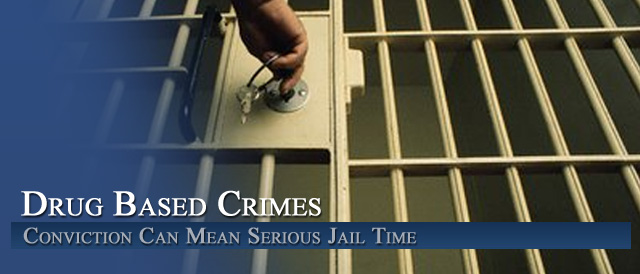




Parole From The Colorado Department of Corrections Prison System – How Parole Works
By Colorado Criminal Defense Lawyer – H. Michael Steinberg
This Article explains the Colorado Parole Process, the Parole Board and How The Colorado Parole System Works.
Pre-Parole Procedures – What Happens Before You May Be Paroled From Prison
All eligible Department of Corrections inmates are scheduled to be seen by the Parole Board at least 90 days prior to their parole eligibility date. Before an inmate can be released from a DOC facility or community corrections program, the inmate must have a parole plan that details where he or she will live and work, and who will be responsible for the inmate upon release.
DOC Case Managers
DOC case managers are responsible for preparing an inmate’s parole plan. The plan then is submitted to the Division of Adult Parole Services for investigation by a community parole officer (CPO). A CPO in the appropriate regional office is assigned to verify information in the parole plan.
The CPO visits the inmate’s proposed residence, employer, family members, and all other persons identified as potential parole resources. Once the division receives the plan, the investigation should be completed within 15days for domestic cases and 30 days for interstate cases. At the release hearing (discussed later in this chapter), the board reviews the inmate’s file, hears from the inmate’s case manager, and makes a determination of whether parole will be granted.
The Parole Board
Size and composition of the Parole Board The Colorado State Board of Parole consists of seven members who are appointed by the Governor and confirmed by the Senate. Parole Board members perform their duties full-time.
The board is composed of two representatives from law enforcement, one former parole or probation officer, and four citizen representatives. The statutes require that Parole Board members have knowledge of parole, rehabilitation, correctional administration, the functioning of the criminal justice system, and the issues associated with victims of crime.
The Parole Board’s primary responsibility is to conduct inmate release hearings. Parole Board members conduct four types of hearings: parole application interviews -the board, via a single member, considers an inmate’s parole application, interviews the inmate, decides whether the inmate should be released on parole, and determines the conditions of parole.
This personal interview may be a face-to-face interview, a live telecommunication interview, or a live telephonic interview at the board’s discretion.
Parole Release Hearings
Release hearings are held at the institution or in the community where the offender is physically incarcerated. If the board member decides to release the offender, the approval by signature is required by an additional board member; -full board reviews -the board meets as a full board to consider all cases involving a violent crime, cases with a history of violence, and all other matters
Four board members constitute a quorum and four affirmative votes are necessary to grant parole.
Colorado Parole Revocation Hearings
But in the case of a parole REVOCATION hearing (rescission hearings) -the board, via a single member, may suspend an established parole release date upon receipt of information not previously considered by the board, or upon receipt of information reflecting improper conduct by the inmate including disciplinary violations.
A rescission hearing is then held by a single board member to determine if a decision to parole should be rescinded prior to the inmate actually being released on parole; and -revocation hearings -revocation hearings are held to determine whether parole should be revoked and whether the parolee should be returned to a DOC facility.
A revocation hearing is conducted either by a single member of the Parole Board or by an Administrative Hearings Officer (AHO). The single board member or AH0 conducting the hearing also makes the decision to revoke or not.
Colorado Parole Release Hearings -The Decision-making Process
The Parole Board considers a number of variables when deciding whether to release an inmate to parole:
the inmate’s criminal record;
the nature and circumstances of the offense for which the inmate was committed to the DOC;
the inmate’s behavioral history while incarcerated;
participation in treatment and programs; and current psychological and medical evaluations.
Mitigating Factors In The Colorado Parole Process
The Parole Board also must consider the inmate’s risk assessment score and apply the current parole guidelines, as set out in statute. The parole guidelines law also sets out nine mitigating factors the board may consider when deciding whether to parole an inmate:
the offender was a passive or minor participant in the crime;
the victim precipitated the crime or somehow provoked the incident;
there was substantial justification for the offense;
the crime was committed under duress or coercion;
the offender has no past record or a long crime-free period;
the offender voluntarily acknowledges wrongdoing;
the offender has family obligations and further incarceration would cause undue hardship on dependents.
the rehabilitation of the offender would be enhanced by imposing a shorter period of incarceration and the offender has attempted compensation to the victim.
Aggravating Factors In The Parole Process
The parole guidelines legislation lists 15 aggravating factors for the Parole Board to consider:
the offender inflicted serious bodily injury or a high degree of cruelty;
the offender was armed with deadly weapons;
the crime involved multiple victims;
the crime involved particularly vulnerable victims;
the victim was a judicial or law enforcement officer;
the offender displays a pattern of violent conduct;
the offender was on parole or probation for another felony at commission;
the offender was in confinement or on escape status at commission;
the offender induced others in commission of offense;
the offender took advantage of a position of trust;
the offender either paid to have the crime committed or was paid to commit the crime;
the crime was premeditated;
the crime was drug or contraband related;
the offender was on bond for a previous felony during commission;
and the offender has increasingly serious convictions, juvenile or adult.
Colorado Parole Revocation and Discretionary Offenses
The statutes provide that if the CPO makes an arrest rather than issuing a summons, the parolee is to be held in custody. After completing an investigation, the CPO has the following options:
file a complaint with the Parole Board and continue to hold the parolee in custody;
order the release of the parolee and request that any warrant be quashed and that any complaint be dismissed and parole restored;
or order the release of the parolee and issue a summons requiring the parolee to appear before the Parole Board to answer the charges.
Colorado Parole Revocation Proceedings
The statutes additionally spell out when a CPO may arrest a parolee in order to begin revocation proceedings.
A CPO may make an arrest when:
he or she has a warrant for the parolee’s arrest;
he or she has probable cause to believe that an arrest warrant has been issued for the parolee in this or another state for a crime or for violation of a condition of parole;
the parolee has committed a crime in the presence of the CPO;
the CPO has probable cause to believe that the parolee has committed a crime;
the CPO has probable cause to believe that the parolee has violated a condition of parole,
that the parolee is leaving or is about to leave the state, or that the parolee will fail to appear before the board to answer charges of violations of the conditions of parole;
or the parolee has been tested for illegal controlled substances and the test was positive.
Colorado Parolees and Drug Testing
Colorado law requires that all convicted felons in the criminal justice system be assessed for drug use. Therefore, as a condition of parole, every parolee is required to submit to random drug and alcohol testing. The statutes spell out specific CPO responsibilities when a parolee tests positive for illegal controlled substances.
For the first positive test, the CPO may:
make an immediate warrantless arrest;
immediately increase the level of supervision including intensive supervision;
begin random screenings for detecting illegal controlled substance use which may serve as the basis for any other community placement;
or refer the parolee to a substance abuse treatment program.
For a second or subsequent positive test for illegal controlled substances, in addition to making an immediate arrest, increasing the level of supervision, or referring the parolee to a substance abuse treatment program, the CPO may: seek parole revocation; or increase the number of drug screenings for the presence of illegal controlled substances.
Parolee Supervisor Classification Levels – After Making Parole
A final responsibility of the division is to classify inmates in order to determine the level of parole supervision. The division uses a supervision classification instrument which provides CPOs with a tool to develop an appropriate supervision plan and establish and administer appropriate education and treatment programs and other productive activities to assist in offender rehabilitation.
Supervision classification tools also provide CPOs with a prediction as to the risk of reoffending while on parole.
Offenders are generally assessed within the first 30 days of their release from prison and are reassessed every six months.
The division classifies inmates in seven levels: new, unclassified, intensive supervision, maximum, medium, minimum, and administrative.
Under the Intensive Supervision Program, parolees have one personal contact with the CPO or program staff per week at any location, one personal home visit within the first 30 days of release and upon each change of residence, employment visitation and monitoring at least twice per month, monthly contact with program staff at any location to verify participation in treatment, and daily phone contact.
Under maximum supervision, parolees must have two personal contacts per month, one personal home visit within the first 30 days of release and upon each change of residence, bi-monthly employment visits, and monthly contact with program staff to verify participation in treatment.
Under medium supervision, parolees have one personal contact per month, one personal home visit within the first 30 days of release and upon each change of residence, quarterly employment visits, and monthly contact with program staff to verify participation in treatment.
Under minimum supervision, parolees have no quarterly personal contacts with the CPO, one personal home visit within the first 30 days of release and upon each change of residence, quarterly employment visits, and monthly contact with program staff to verify participation in treatment.
The Colorado Parole Revocation Process
Revoking an inmate’s parole necessitates interaction between the Division of Adult Parole Services and the Parole Board. The Division of Adult Parole Services is responsible for monitoring the inmate while in the community on parole and for reporting that inmate to the Parole Board when the inmate violates a condition of parole.
The Parole Board is responsible for providing the inmate with a hearing and deciding whether the inmate should remain on parole. CPOs and the revocation process. CPOs are generally the starting point for the revocation process. Statutes dictate that a CPO may arrest a parolee for specific reasons.
Pursuant to administrative regulations of the DOC, revocation complaints filed by CPOs are either mandatory or discretionary. When a parolee commits certain offenses, the CPO is required to file a complaint in order to begin revocation proceedings (this does not mean the offender’s parole is required to be revoked).
For other offenses, the CPO uses discretion in deciding whether to begin revocation proceedings.
Mandatory Complaint Offenses
Mandatory complaint offenses include the following:
possession or use of a firearm or deadly weapon;
an arrest and charge for any felony;
an arrest and charge for a crime of violence as defined in Section 16-1-104 (8.5), C.R.S.;
an arrest and charge for a misdemeanor assault involving a deadly weapon or resulting in bodily injury to the victim;
an arrest and charge for unlawful sexual contact; refusal to submit to urinalysis to determine the presence of drugs or alcohol;
an arrest and charge or conviction for any municipal offense, involving assaultive offenses, against the person;
failure to make an initial report to a CPO upon release to parole supervision;
refusal to allow a search of his or her person, residence, or premises or vehicle under his or her control;
leaving the state without lawful permission; being found within the boundaries of a county which is not the parolee’s residence of record, and where a correctional facility is located;
being found within the boundaries of a county which is not the parolee’s residence of record, and within the boundaries of state property;
and absconding from parole supervision.
Discretionary Complaint Offenses
CPOs have the discretion to file or not to file a complaint for a parole violation that does not require mandatory action, based upon the circumstances of the complaint. Administrative regulations provide that discretionary decisions are determined on a case-by-case basis.
Such decisions are made for offenses including but not limited to the following:
technical parole violations such as failure to file a change of address,
refusing to allow a search, or refusing to comply with a special condition of supervision;
and a positive test for the presence of drugs or alcohol.
In making a decision to file or not to file a complaint for a parole violation, CPOs are required to consult with a supervisor and to consider several factors:
public safety;
the current offense;
prior arrest or technical parole violations during the current period of parole supervision;
history of prior parole probation failures; pattern of repetitive criminal behavior;
history of alcohol – drug use and dependency;
The Decision To Revoke Colorado Parole
Statutes and administrative regulations provide that revocation hearings are to be conducted by a single Parole Board member or by an Administrative Hearings Officer (AHO). In general, if the board member or AH0 determines that the parolee violated a condition of parole, he or she may either revoke the parole, continue the parole in effect, or continue the parole with modified parole conditions.
If parole is revoked, the board member or AH0 is required to provide the parolee with a written statement of the evidence relied on and the reasons for revoking parole.
Specifically, the board member or AH0 may make a decision as follows:
if the board determines that the parolee has violated parole by committing a crime, the board may revoke parole and have the parolee transported to a place of confinement designated by the DOC executive director;
if the board determines that the parolee has violated a condition of parole other than a new crime, the board may:
-revoke parole and place the parolee in a place of confinement determined by the DOC executive director;
-revoke parole for up to 180 days and place the offender in a community corrections facility, a place of confinement within the DOC, or any private facility under contract to the DOC;
-revoke parole for up to 90 days and place the offender in any private facility under contract to the DOC;
or
-revoke parole for up to 180 days and place the offender in a return-to-custody facility;
If the board determines that the parolee has violated any condition of parole, other than a new crime, and the parolee was on parole for a class 5 or class 6 non-violent felony except for menacing or unlawful sexual behavior or an offense against an at-risk adult or juvenile or a domestic violence offense, the board may:
-revoke parole for up to 180 days;
if the board determines the parolee violated any condition of parole, other than a new crime, and the parolee was not on parole for a crime of violence, the board may:
-revoke parole for up to 180 days in a place of confinement determined by the DOC executive director;
-revoke parole for up to 180 days and place the offender in a community corrections program;
or -revoke parole for up to 180 days and place the parolee in a return-to-custody facility.
Other Articles of Interest:
- Colorado Criminal Law – Extension of the Period of Probation Beyond The Original Sentence
- Colorado House Arrest” & “Home Confinement” or In Home Detention as a Jail Alternative
- 2013 Colorado Law Redesigns Sentencing For Colorado Drug Crimes – Senate Bill 250
- Colorado Criminal Law – Colorado Probation Revocation Cases
- Restitution Laws In Colorado* – Part III of III













